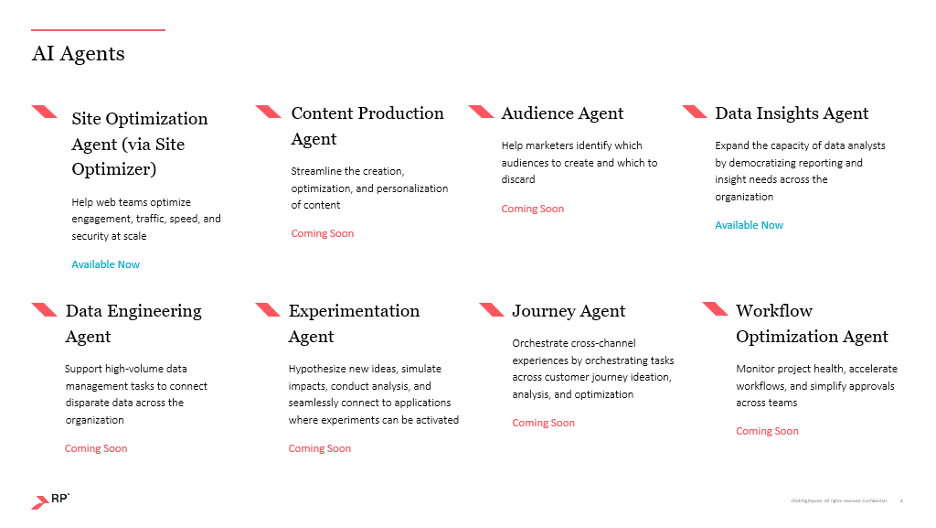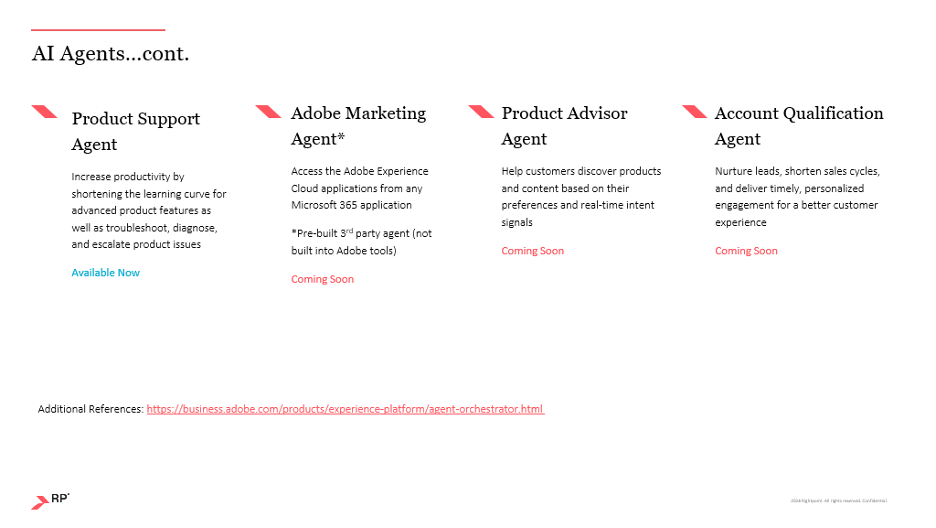
How to Get the Most Value From AI in Adobe Commerce


As Adobe Commerce adds more AI capabilities, merchants are eager to leverage the new tools to boost operational efficiency, improve customer experience (CX), and grow revenue and profit margins. However, even with technology as intuitive as AI, there’s a learning curve for strategy and implementation. In this post, we’ll explore how AI functions in Adobe Commerce today and how you can overcome common challenges to get your AI-enabled improvements up and running.
Key Takeaways
Adobe Commerce AI capabilities can help merchants improve search, merchandising, and forecasting for inventory and marketing spend.
Fully leveraging Adobe Commerce AI can drive operational efficiencies and CX enhancements that increase profit margins and drive growth.
Making the most of AI in Commerce requires adaptations in strategy, data, skills, change management, and more.
An experienced Adobe Commerce partner can accelerate your organization along the AI learning curve.
What Can AI Do in Adobe Commerce Today?
Adobe Commerce has been adding AI and machine learning functions for several years. Through its Adobe Generative AI engine, Commerce can now deliver powerful capabilities, most notably in:
Search. Live Search can analyze customer intent and context for real-time personalized search results ranked by popularity and relevance. Natural language processing gives customers a more conversational experience and more personalized results.
Merchandising. Adobe uses an approach similar to Live Search to surface the most relevant products, sort them appropriately, and display the most meaningful cross-sell suggestions.
Inventory and demand forecasting. AI-driven analytics give merchants better insights to track sales, identify high-performing products, and get better demand and inventory management predictions.
Marketing forecasting. Adobe’s Attribution AI measures the incremental impact of individual customer interactions to fuel predictive planning and forecasting for optimal marketing spend.
How Do Merchants Benefit from AI in Adobe Commerce?
Merchants that fully leverage these AI capabilities can use them to drive operational efficiencies. Built-in automation and AI analytics can aid in optimizing operations, production, and procurement. Adobe’s GenAI tools can create content and generate personalized variations to accelerate the pace of content creation and delivery.
These operational improvements can also enhance the employee experience by freeing commerce team members to focus on higher-impact tasks. At the same time, AI’s ability to provide more personalized customer experiences can increase engagement, conversion rates, average order value, and customer loyalty. All of these benefits can contribute to higher profit margins, revenue increases, and growth.
What About Adobe’s AI Agents?
Adobe has already rolled out many AI Agents for its Digital Experience Platform (DXP) and plans to release more in the near future.


Some of these agents are purpose-built for integration with specific Adobe products and others are more general, embedded across the entire Adobe ecosystem. Not all of these AI agents are Commerce-specific, but some can be used for Commerce functions like data aggregation and analytics.
In most cases, users won’t engage directly with the AI agents. Instead, they can have text conversations with AI Assistant, which works with the agents to answer questions about Adobe products, provide analytics and insights on demand, help with process and strategy optimization, and assist with other tasks.
To help coordinate its expanding suite of AI agents, Adobe has also released Agent Orchestrator, which supports:
Creation and management of Adobe, internal, and third-party AI agents
Implementation of action guidance based on context
Coordination of agents across workflows
Governance, compliance, and visibility.
Overcoming Challenges Along the AI Maturity Curve
Merchants often face challenges in the early phase of AI maturity. The sooner you and your team can resolve these potential barriers to progress, the sooner you can realize the value of Adobe’s AI offerings.
1. Aligning on a Strategic AI Vision
Successful AI implementation requires a clear roadmap based on where AI can deliver the most value for your business. Without measurable business objectives, you risk wasting time and money.
Clear this AI hurdle: Invest time in an AI strategy that includes what’s possible now and a plan for the future. Align your AI initiatives with broader business goals and market demands.
2. Addressing Data Quality and Compliance Issues
AI model quality depends on the data used for training. Inaccurate, incomplete, and biased data can generate unreliable results. Data usage for training must comply with regulations like GDPR and CCPA and with industry standards for protecting sensitive data.
Clear this AI hurdle: Within your high-level AI strategy, define your requirements for data collection, storage, management, and access.
3. Closing AI Skills Gaps
Because AI capabilities, tools, and use cases are evolving fast, businesses can struggle to keep up with the key roles and skill sets required to fully leverage AI.
Clear this AI hurdle: Partner with AI consultants who can provide data engineering and machine learning experts with Adobe Commerce experience. As your AI strategy matures, you can also invest in training and AI talent recruitment.
4. Countering Cultural Resistance
If your employees are afraid that AI tools will replace their roles or make their jobs harder, they’ll struggle to adapt and your business will fail to realize full ROI from AI.
Clear this AI hurdle: Gain workforce buy-in by showing how AI tools can make their jobs more meaningful by allowing them to focus on more valuable tasks. Provide adequate training and encourage a data-driven culture that can use AI to its fullest advantage.
5. Justifying AI Investment
Demonstrating ROI on AI initiatives can be challenging, especially for smaller organizations with limited budgets.
Clear this AI hurdle: Quantify the cost of not acting, define your KPIs for measuring the impact of your AI investment, and correlate those KPIs to the steps and goals outlined in your strategic AI vision.
6. Unlocking Organizational Silos
When departments don’t collaborate, AI initiatives can stall and fail to realize full value.
Clear this AI hurdle: Find out where your organization’s silos are, then work to earn buy-in from those teams. Consider cross-departmental initiatives and other opportunities to bring teams closer together.
Prepare for Success with AI in Adobe Commerce
The potential rewards of AI for commerce are vast, but the challenges can take time to address. If you want to accelerate your commerce organization’s progress along the AI maturity curve or learn more about how you can maximize the value of AI in Adobe Commerce, contact us.
As a Platinum-Level Adobe Solution Partner, we’re ready to help you get the most from today’s AI tools and prepare for what’s next.


